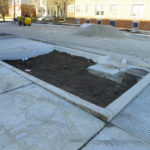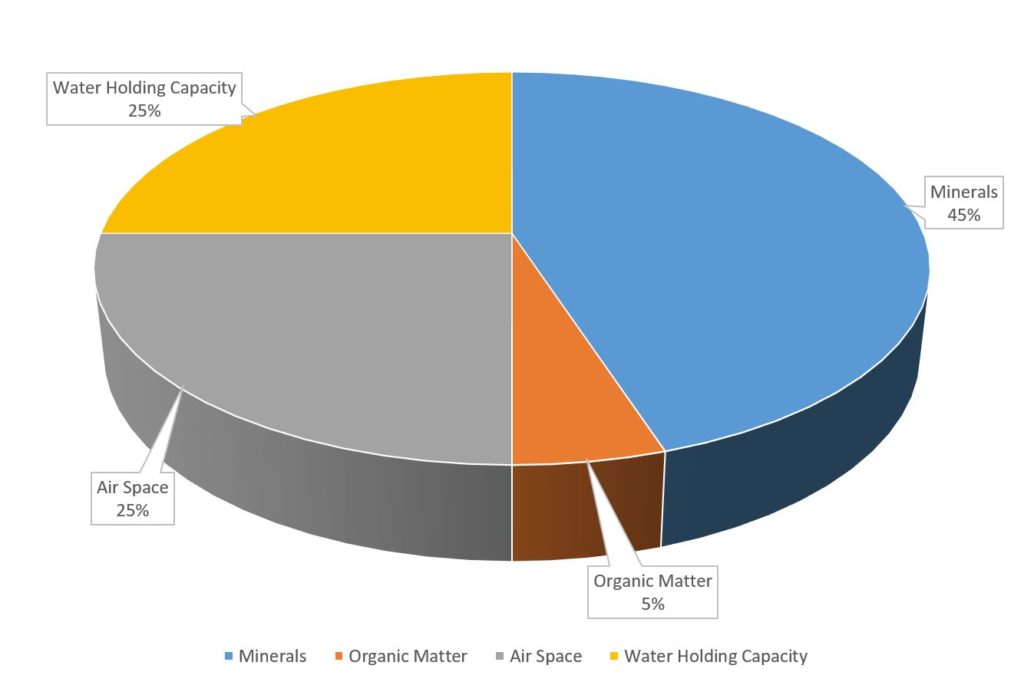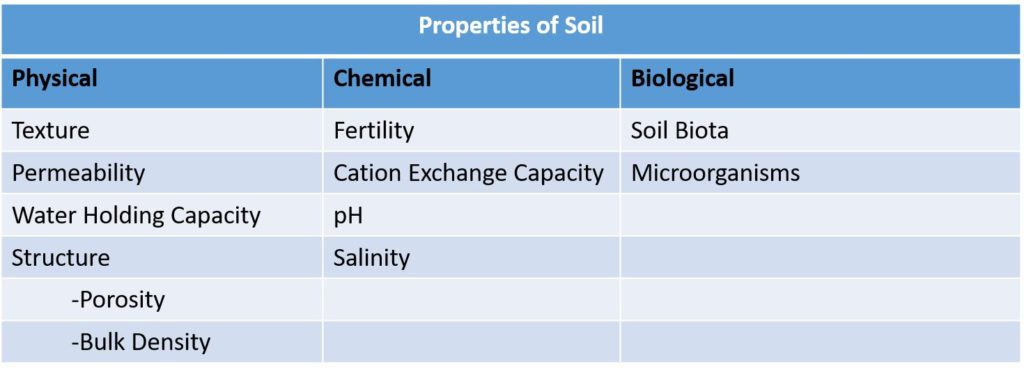Soil is the ‘lifeblood’ of plant health. Many people tend to focus more on above ground portions of the plant than the below ground environment. We should always remember that a plant is only as healthy as its roots. Knowing the basics of soils will help in understanding the health of landscape plants (Fig. 1).
We know that soil takes hundreds of years to form, but what factors are needed for the formation of soil? There are five factors that contribute to soil formation, which include, parent material, climate, biota (living organisms), topography, and time. Each of these influences the soil that is located in our landscapes.
Soil texture is the proportions of sand, silt, and clay in a soil profile. The soil texture is influenced greatly by the parent material. In central and northern Indiana, glacial till has a great influence on the soils as a parent material, where thin loess is found over loamy glacial till. Since most glacial till contains higher amounts of the smallest soil particle, clay, most of the soils in the central areas of Indiana have poor drainage, compared to areas in southern Indiana. The proportions of sand, silt, and clay will determine many characteristics that are vital to plant health (i.e. water holding capacity, porosity, etc.) due to the size of the soil particle (Fig. 2).
The ideal soil contains 45% mineral, 5% organic matter, 25% air, and 25% water (Fig. 3). As we know, constructed landscapes are far from ideal. Building up organic matter over time will improve plant health in the landscape. Mulching your landscape beds adds many benefits, such as weed control, moisture retention, and aesthetics, but an additional benefit often overlooked is the addition of organic matter. Organic matter aids in drainage, cation exchange capacity (CEC), and promotes beneficial microbes.
The soil horizon is the cross-section of the soil profile, which is categorized into O, A, E, B, and C horizons. The O horizon is the organic matter, which is located in the top one to two inches in most soil. The A horizon is highly weathered parental material layer which is located in the top 12 inches. The E horizon, which may or may not be present, is made of the leaching of organic matter and tends to be a white or gray in color. This should not be confused with mottled soil due to a lack of drainage. The B horizon is an accumulation of silicate clay, iron, gypsum, and/or calcium carbonates due to the washing out of previous horizons. This layer is located beneath the A horizon and is 30 inches or more below the organic layer. The final layer is the C horizon, which is the parent material and the least weathered of the layers.
There are three soil properties that are important to keep in mind for the health of plants: Physical, Chemical, and Biological (Fig. 4). We will explore in detail each of these properties in future newsletters.
Resources:
- USDA NRCS-Soil Texture Calculator: https://www.nrcs.usda.gov/wps/portal/nrcs/detail/soils/research/guide/?cid=nrcs142p2_054167
- Purdue Education Store: https://mdc.itap.purdue.edu/
- Soil Nitrogen Cycle: https://store.extension.iastate.edu/Product/Soil-Nitrogen-Cycle
- Understanding the Dynamics of Soil Diversity and Variability in the Field: https://store.extension.iastate.edu/Product/Understanding-the-Dynamics-of-Soil-Diversity-and-Variability-in-the-Field
- Soil Organic Carbon Cycle: https://store.extension.iastate.edu/Product/Soil-Organic-Carbon-Cycle
Build Soil Organic Matter to Improve Your Crop Production System: https://store.extension.iastate.edu/Product/Build-Soil-Organic-Matter-to-Improve-Your-Crop-Production-System



